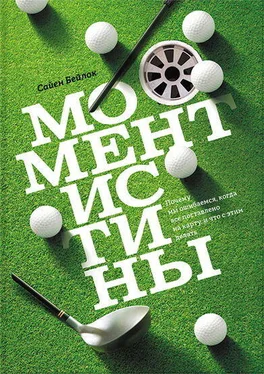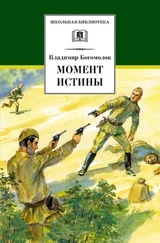75.Figlio D. N. Why Barbie says ‘Math is Hard’ // Working Paper, University of Florida, December 2005.
76.Больше прочесть о гендерных различиях в привязке к именам можно здесь: Пинкер С. Субстанция мышления: язык как окно в человеческую природу. М. : КД Либроком, 2013.
77.Murphy M. C., Steele C. M., Gross J. J. Signaling threat: how situational cues affect women in math, science, and engineering settings // Psychological Science, 2007. Vol. 18. Pp. 879–885.
78.Steele C. M. A threat in the air: How stereotypes shape intellectual identity and performance // American Psychologist, 1997. Vol. 6. Pp. 613–629.
79.Tyre P. The Trouble with Boys: A Surprising Report Card on Our Sons, Their Problems at School, and What Parents and Educators Must Do. New York: Three Rivers Press, 2008.
80.College Board, Summary Reports: 2007: National Report // http://www.collegeboard.com/.
Глава 5
81.Hembree R. The nature, effects, and relief of mathematics anxiety // Journal for Research in Mathematics Education, 1990. Vol. 21. Pp. 33–46. См. также: Beilock S. L., Gunderson L. A., Ramirez G., Levine S. C. Female teachers’ math anxiety affects girls’ math achievement // Proceedings of the National Academy of Sciences, USA, 2010. Vol. 107. Pp. 1860–1863.
82.Alexander L., Martray C. The development of an abbreviated version of the Mathematics Anxiety Rating Scale // Measurement and Evaluation in Counseling and Development, 1989. Vol. 22. Pp. 143–150. Перепечатано с разрешения.
83.Foundations for Success: The Final Report of the National Mathematics Advisory Panel, 2008 // http://www2.ed.gov/about/bdscomm/list/mathpanel/report/final-report.pdf.
84.Ashcraft M. H., Kirk E. P. The relationships among working memory, math anxiety, and performance // Journal of Experimental Psychology: General, 2001. Vol. 130. Pp. 224–237.
85.Steele C. M., Aronson J. Stereotype threat and the intellectual test performance of African-Americans // Journal of Personality and Social Psychology, 1995. Vol. 69. Pp. 797–811.
86.Aronson J. et al. When white men can’t do math: Necessary and sufficient factors in stereotype threat // Journal of Experimental Social Psychology, 1999. Vol. 35. Pp. 29–46.
87.Smith E. E., Jonides J. Storage and executive processes in the frontal lobes // Science, 1999. Vol. 283. Pp. 1657–1661.
88.Rothmayr C. et al. Dissociation of neural correlates of verbal and non-verbal visual working memory with different delays // Behavioral and Brain Functions, 2007. Vol. 3. P. 56. Воспроизведено с разрешения.
89.Beilock S. L., Rydell R. J., McConnell A. R. Stereotype threat and working memory: Mechanisms, alleviation, and spill over // Journal of Experimental Psychology: General, 2007. Vol. 136. Pp. 256–276.
90.DeCaro M. S., Rotar K. E., Kendra M. S., Beilock S. L. Diagnosing and alleviating the impact of performance pressure on mathematical problem solving // Quarterly Journal of Experimental Psychology: Human Experimental Psychology, 2010 // https://hpl.uchicago.edu/sites/hpl.uchicago.edu/files/uploads/QJEP_2010.pdf.
91.Wang J. et al. Perfusion functional MRI reveals cerebral blood flow pattern under psychological stress // PNAS, 2005. Vol. 102. Pp. 17804–17809.
92.Beilock S. L., Carr T. H. When high-powered people fail: Working memory and ‘choking under pressure’ in math // Psychological Science, 2005. Vol. 16. Pp. 101–105.
93.Gimmig D., Huguet P., Caverni J., Cury F. Choking under pressure and working memory capacity: When performance pressure reduces fluid intelligence // Psychonomic Bulletin & Review, 2005. Vol. 13. Pp. 1005–1010.
94.Raven J. C., Raven J. E., Court J. H. Progressive Matrices. Oxford: Oxford Psychologists Press, 1998. См. также: http://psycabi.net/testy/717-test-ravena-progressivnye-matritsy-raven-progressiv-matrices-metodiki-dlya-diagnostiki-intellekta-vzroslykh.
95.Hayes S., Hirsh C., Mathews A. Restriction of working memory capacity during worry // Journal of Abnormal Psychology, 2008. Vol. 17. Pp. 712–717.
96.Dutton D. G., Aron A. Some evidence for heightened sexual attraction under conditions of high anxiety // Journal of Personality and Social Psychology, 1974. Vol. 30. Pp. 510–517.
97.Mattarella-Micke A. et al. Individual differences in math testing performance: Converging evidence from physiology and behavior. Постер представлен на Ежегодной конференции Ассоциации психологической науки, Чикаго, май 2008 г.
98.http://www.wonderlic.com/.
99.http://sports.espn.go.com/espn/page2/story?page=wonderlic/090218.
100.Getting inside their heads // Chicago Tribune, 2008. February 20.
101.Wondering about the Wonderlic? // USA Today, 2006. February 28.
102.College Board, The Sixth Annual AP Report to the Nation // http://www.collegeboard.com/apreport.
Глава 6
103.The Nation’s Report Card, National Assessment of Educational Progress // http://nces.ed.gov/nationsreportcard/.
104.Liston C., McEwen B. S., Casey B. J. Psychosocial stress reversibly disrupts prefrontal processing and attentional control // Proceedings of the National Academy of Sciences, USA, 2009. Vol. 106. Pp. 912–917.
105.Liston C., McEwen B. S., Casey B. J. Psychosocial stress reversibly disrupts prefrontal processing and attentional control // Proceedings of the National Academy of Sciences, USA, 2009. Vol. 106. Pp. 912–917. Воспроизведено с разрешения.
106.Cohen G. L., Garcia J., Apfel N., Master A. Reducing the racial achievement gap: A social-psychological intervention // Science, 2006. Vol. 313. Pp. 1307–1310.
107.Cohen G. L. et al. Recursive processes in self-affirmation: Intervening to close the minority achievement gap // Science, 2009. Vol. 324. Pp. 400–403.
108.Дополнительно см.: Beilock S. L. Math performance in stressful situations // Current Directions in Psychological Science, 2008. Vol. 17. Pp. 339–343.
109.Ramirez G., Beilock S. L. The ‘writing cure’ as a solution to choking under pressure in math. Работа представлена на Ежегодной конференции Общества психономики, Чикаго, ноябрь 2008 г.
110.Pennebaker J. W. Writing about emotional experiences as a therapeutic process // Psychological Science, 1997. Vol. 8. Pp. 162–166. См. также: Pennebaker J. W. Writing to Heal: A Guided Journal for Recovering from Trauma and Emotional Upheaval. Oakland: New Harbinger, 2004.
111.Depue B. E., Curran T., Banich M. T. Prefrontal regions orchestrate suppression of emotional memories via a two-phase process // Science, 2009. Vol. 317. Pp. 215–219. См. также обсуждение статьи: Holmes E. A., Moulds M. L., Kavanagh D. Memory Suppression in PTSD Treatment? // Science, 2009. Vol. 318. Pp. 1722. Здесь речь о том, что утверждение, будто подавление — эффективная стратегия для навязчивых состояний, противоречит имеющимся данным.
Читать дальше
Конец ознакомительного отрывка
Купить книгу











